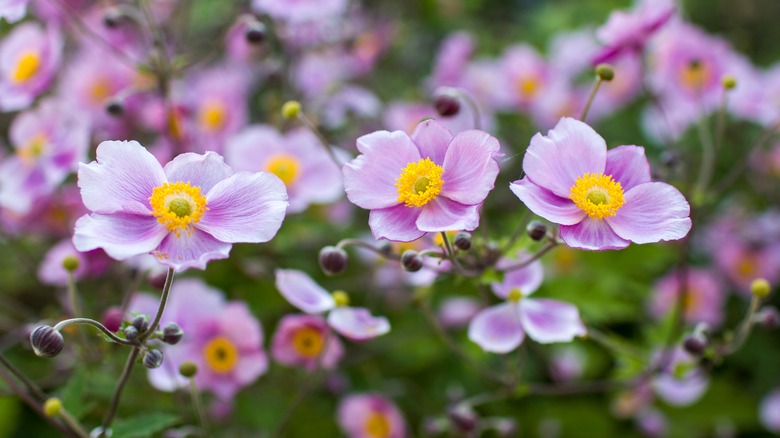Plant This Perennial In October For Blooms That Are Worth The Wait
Gardening is a real labor of love, and sometimes it can take quite a while for things to take root — both literally and figuratively. However, if you're willing to play the waiting game, the payoff is often brilliant and full of color. Such is the case with Japanese anemone (Anemone hupehensis). The delicate flowering perennial is slow to get established, and it can take a year or more before your seedlings start producing blooms. However, once it's established, Japanese anemone is an easy and versatile plant that will provide visual interest and help attract all kinds of pollinators to your yard.
Japanese anemone is often used as a flowering ground cover that's ideal for planting under trees or shrubs. That said, it also works great in containers if you're not interested in letting the plant spread. Getting started on your Japanese anemone in October is ideal because it is the best month to plant (most) perennials – giving root systems time to develop before the cold winter weather hits. Additionally, you'll reap benefits like lower plant prices, better soil conditions, and less competition from weeds when you plant in the fall.
Tips for growing Japanese anemone in your garden
Japanese anemone is hardy in USDA zones 4 through 8, and it thrives in an environment with partial to full sun and moist, well drained soil. You can start the plant from seed indoors in October and transplant the seedlings come spring. To do this, fill a container with potting mix and water. Once the water is drained, sprinkle your seeds on top of the moist mix, and then cover the seeds with a thin layer of potting mix. Keep this container under a grow light, and once they reach 2 or 3 inches tall, transplant the seedlings into individual containers to give them each more space.
You can also grow the plant from root cuttings. Dividing established plants is the best way to propagate Japanese anemones for a fall garden full of color. You can put these transplants in your garden in spring or fall when the ground is moist and warm. Once they're planted outside in the ground, add a layer of mulch to your plant each spring to increase nutrients and deter weeds.

